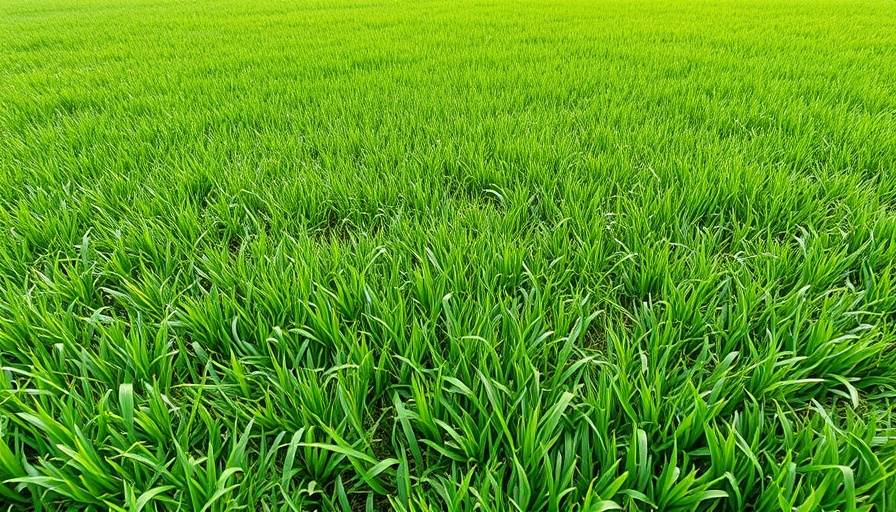
Understanding Bermuda Grass and St. Augustine Lawns
Bermuda grass and St. Augustine grass are two popular warm-season turf types, yet they do not coexist harmoniously. Homeowners often face a battle between these grasses, especially when Bermuda grass invades a St. Augustine lawn. While Bermuda grass boasts aggressive growth through rhizomes and stolons, it thrives in lower mowing heights, creating a softer aesthetic. In contrast, St. Augustine is known for its thick, sturdy blades and should be cared for with tall mowing. This vibrant contrast results in an unsightly lawn when the two grass types intertwine.
Why the Collision of These Two Grasses Matters
Across warmer climates, particularly in areas like Florida, Bermuda grass is a common nuisance for homeowners with St. Augustine lawns. This can be especially troubling in neighborhoods where lawns are meticulously maintained for both aesthetic and property value reasons. Understanding the implications of Bermuda grass invading St. Augustine lawns is essential not only for visual appeal but also for healthy lawn maintenance.
The Two Traditional Approaches to Control Bermuda Grass
Historically, homeowners facing the Bermuda takeover had limited options. The first involves simply accepting the invasion, which many do out of discouragement or lack of knowledge regarding alternative control methods. The second option is more drastic: waiting for the invasion to escalate before deciding to scrape the affected area and re-sod with clean St. Augustine grass. However, it’s crucial to acknowledge that this cyclical process typically leads to the Bermuda grass returning within a year, resulting in repeated frustrations and labor.
Introducing New Solutions: Glyphosate-Tolerant Options
Enter the modern era of lawn care! In 2018, the introduction of glyphosate-tolerant St. Augustine grass, specifically the “Scotts ProVista St. Augustinegrass,” offered a groundbreaking solution. This innovative variety allows homeowners to tackle Bermuda grass invasions more effectively by utilizing herbicides without negatively affecting their St. Augustine turf. This signifies a shift in lawn maintenance, empowering homeowners to reclaim their lawns through informed choices.
Practical Tips for Maintaining a Healthy Lawn
Whether facing a Bermuda grass invasion or simply looking to maintain a beautiful St. Augustine lawn, there are practical strategies homeowners can employ:
- Mowing Height: Mow St. Augustine grass high to prevent weed encroachment and discourage Bermuda grass invasion.
- Water Management: Proper irrigation techniques ensure that your lawn remains healthy, providing adequate moisture without promoting Bermuda grass growth.
- Fertilization: Regularly fertilizing the St. Augustine grass serves to strengthen its health and ability to outcompete invasive grasses.
When to Call the Professionals
For many homeowners, the challenge of dealing with invading grasses can feel overwhelming. If the invasion has escalated beyond a manageable point, calling in professional lawn care services may be a wise decision. Experts can provide specialized treatment plans tailored to individual lawns, ensuring that the best strategies are implemented effectively for long-term health.
The Emotional Landscape of Lawn Care
Lawn care is more than just maintenance; it represents the pride of homeownership and the desire to cultivate a welcoming outdoor space. It’s about creating an environment that’s enjoyable for families and a focal point for gatherings. The struggle against Bermuda grass can evoke feelings of frustration, amending the joy of lawn care. Understanding your options and clarifying what’s at stake helps make the process less daunting and more fulfilling.
As we work together to foster beautiful lawns, remember that whether through DIY methods or expert guidance, reclaiming your space is an achievable goal.
 Add Row
Add Row 
 Add
Add 


 Add Row
Add Row  Add
Add 
Write A Comment